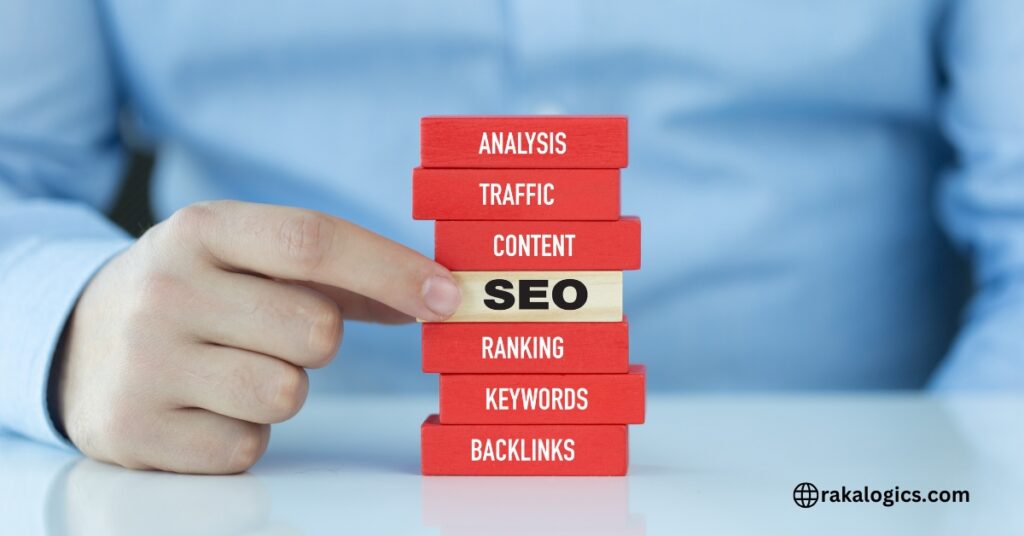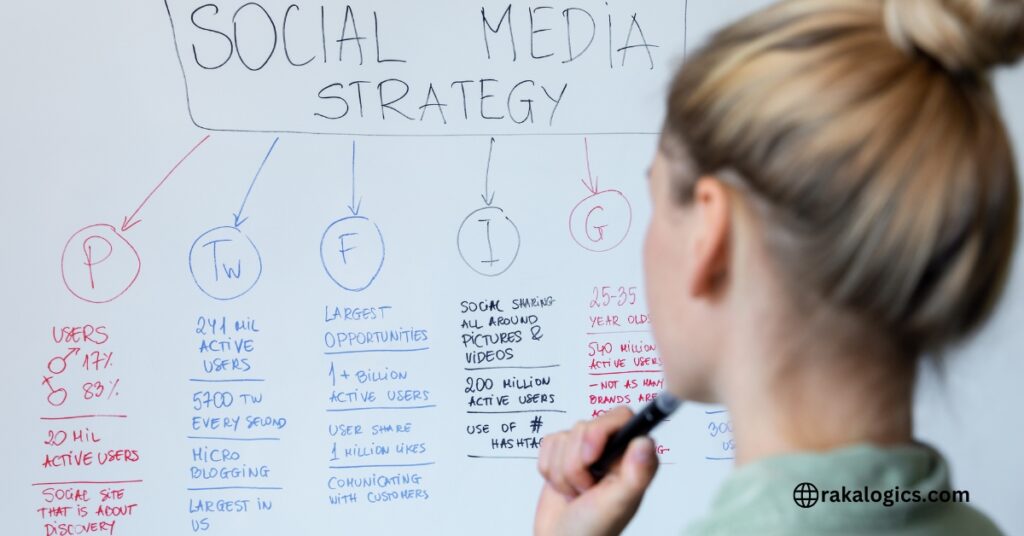
Do you want to create a winning B2b SEO campaign? It has become a vital feature for B2B businesses to have a good online presence. In today’s world, where companies are searching more than ever for services online, mastering SEO can give you a competitive edge advantage. A winning B2B SEO campaign does not just boost visibility, it attracts the right clients, develops leads, and generates sales. So, what is the key to how to Create A Winning B2B SEO campaign?
In this article, we will talk about B2B business, its importance, and how to make good SEO of B2B to attract potential clients. Let’s dive into some concrete strategies, techniques, and tips that can help you enjoy further success online.
Read More: Best Content Marketing Agencies You Need To Hire
What is B2B SEO?
B2B SEO, or Business-to-Business Search Engine Optimization, is practices that enhance any business website’s visibility in the outcome of search results specifically for other businesses. Emotional appeal can influence buying decisions in B2C SEO. Whereas B2B SEO focuses more on logical decision-making, longer sales cycles, and building relationships.
B2B differs significantly from B2C SEO. The process of buying in B2B is lengthy and often involves multiple participants or partners. Your audience is coming to find solutions to well-defined problems. You should create valuable content that offers solutions for your audience’s problems.
Why is B2B SEO Important?
- More Visibility
The better your ranking will be, the more likely people are to find you for their desired needs.
- High-ranking
High-ranking credibility indicates businesses are more likely to engage with brands that appear on the first page of search results.
- Cost-Effective Marketing
SEO is a great ROI play in comparison with the traditional advertising of advertisement.
- Targeted Traffic
With the best SEO, potential clients will be attracted who are actively searching for your services, hence a better conversion rate.
Find out More: The Transformation of Digital Marketing in the UK
Here are the step-by-step guidelines to Create a Winning B2B SEO Campaign
Step 1: Understand Your Target Audience
Define Your Ideal Customer Profile
Understanding your audience is the first step in a good marketing strategy. Start by defining your Ideal Customer Profile (ICP). Consider these questions: “What industries are they in? what problems do they have? What solutions are they looking for?”
Create Customer Profiles
Translate your clear ideal customer profile into a detailed buyer persona. A buyer persona is a representative characterization of your ideal customer, one created with market research and real data about your current customers. This will include
- Demographics
Age, gender, location, job title, etc.
- Pain Points
What problems do they experience in their roles?
- Goals
What do they want to achieve?
Understanding their pain points is the first step toward creating content that resonates with your target audience
Step 2: Conduct Keyword Research
Importance of Keyword Research
Keyword research is at the heart of your SEO approach because it provides you with information on the words and phrases your target audience uses to find solutions. In doing this, you will easily create content as it should be.
Tools for Keyword Research
Numerous tools would be helpful in keyword research for you.
- Google Keyword Planner
It will suggest keywords and also provide data about the search volume.
- SEMrush
It helps you learn about keyword research, competitor insights, and much more.
- Ahrefs
Useful for finding keywords and backlink analysis.
- Ubersuggest
It’s a very user-friendly tool that gives keyword ideas and also search volumes.
Types of Keywords
- Short-Tail Keywords
These are general terms, for example, “B2B marketing”; and hence, very competitive. They consist of 1-3 words.
- Long-Tail Keywords
More narrow phrases such as “Best B2B marketing strategies for tech companies”. Most of them tend to have lower competition and higher potential conversion. They consist of more than 3 words.
Analyzing Competitors
Don’t forget to look through your competitors to see what keywords they rank for and where you can drive advantage from missing points in their strategy.
Explore More: The Best Marketing Agency in Toronto for Your Business
Step 3: Optimize Your Website
On-Page SEO Techniques
Your website is your most important online resource. Here is how to optimize it effectively
Meta Tags
- Title Tags
Make sure your title tags include primary keywords and accurately describe the content. Keep them under 60 characters.
- Meta Descriptions
Write catchy meta descriptions (under 155 characters) that attract clicks and include your target keywords.
2. Header Tags
Use header tags (H1, H2, H3). This will make your content more readable and your site easier to crawl by search engines.
3. URL Structure
Keep your URLs clean and keyword-rich. A well-structured URL (e.g., www.yoursite.com/b2b-seo-guide) helps both users and search engines understand the page’s content.
4. Internal Linking
Link to other relevant pages within your website. This helps users navigate your site and improves your SEO by distributing page authority.
2. Technical SEO
a. Site Speed
A slow site annoys your users and adversely affects your ranking. Use tools like Google PageSpeed Insights to review and improve the speed of your site.
b. Mobile Optimization
Your website must work on mobile devices too, since many check their phone to check through websites. And it must have a responsive design to fit all those phone designs.
c. SSL Certificate
Enable SSL certificates on your site (HTTPS). For search engines, secure sites are valuable, and users tend to trust them more
3. Content Optimization
- Quality Content
Create high-quality, relevant content that provides value to your target audience. Examples include blog posts, case studies, and whitepapers.
- Keyword Placement
Incorporate keywords naturally throughout your content, including in headers, the first paragraph, and the conclusion. Make it natural so that it does not seem like stuffing of keywords. Keyword stuffing would also leave a bad impression on others.
- Visual Content
Use images, infographics, and videos to increase your content. Ensure all visual elements are optimized with descriptive alt text.
Find out more: 4 Best Ad Networks for Bloggers and Publishers in 2024

Step 4: Create High-Quality Content
1. Types of Content
- Blog Posts
Publish your blog regularly on topics relevant to your audience. You can create different types of content like how-to guides, industry insights, and expert articles.
- Case Studies
Showcase your success stories. Case studies demonstrate your expertise and help build credibility.
- E-books and Whitepapers
Provide detailed resources such as lead magnets. They can help you gather leads.
- Videos and Webinars
Utilize video content to explain complex topics. Hosting webinars helps your brand stand out as an expert.
2. Content Strategy
Develop a content calendar to plan your posts ahead of time. This keeps your content organized and ensures a consistent publishing schedule.
3. Promote Your Content
Once you have created valuable content, you should begin pushing it through various channels, especially
- Social Media
Post on LinkedIn, Twitter, and other platforms where your audience gathers.
- Email Marketing
Share newsletters carrying your fresh content with your subscribers.
Step 5: Build Backlinks
1. Importance of Backlinks
Backlinks, or inbound links, are of uttermost importance in helping increase the authority and ranking of a site. That is because they will tell search engines that this content is credible and worth linking.
2. Strategies for Building Backlinks
- Guest Blogging
Reach out to industry blogs and offer your services to write guest posts for them. This will give you the exposure you need, and in the process, they will let you make backlinks to your site.
- Collaborate with Influencers
Team up with influencers in your field. Creating content and promotions together can help you get valuable backlinks.
- Directory Submissions
Submit your business to relevant online directories. Ensure that these directories are reputable to avoid damaging your site’s credibility.
3. Monitor Your Backlink Profile
Regularly check your backlink profile using tools like Ahrefs or Moz. Remove any toxic or spammy links that could hurt your SEO.
Step 6: Use Social Media Effectively
1. Social Media as an SEO Tool
Social media does not have a direct impact on SEO. However, it can increase traffic to the website and the brand’s visibility. Here is how to do it
- Share Content
Promote your blog posts, case studies, and other resources on social platforms.
- Engage with Followers
Reply to comments and messages. This helps build relationships and encourages brand loyalty.
- Join Industry Groups
Participate in relevant groups on either LinkedIn or Facebook to demonstrate that you are a recognized expert.
2. Social Media Strategies
- Create Engaging Posts
Use eye-catching visuals and engaging captions to attract attention from potential audiences.
- Utilize Hashtags
Use industry-related hashtags to increase the visibility of your posts.
Read More: How to get free traffic on blog from social media?

Step 7: Monitor Your Success
1. Tools for Tracking Performance
Use tools like Google Analytics and Google Search Console to track your website’s performance. Key metrics to monitor include
- Organic Traffic
How many visitors are coming from search engines?
- Bounce Rate
Are visitors leaving your site quickly?
- Conversion Rates
Are visitors taking desired actions (e.g., signing up for a newsletter)?
2. Adjust Your Strategy
Based on your findings, adjust your SEO strategy accordingly. If certain keywords are underperforming, consider revising your content or exploring new keywords.
3. Regular Audits
Perform regular SEO audits to identify areas of improvement. Doing this can help keep ahead of problems that might affect your rankings.
Step 8: Stay Updated with SEO Trends
As the field of search engines continues to evolve and update their algorithms, you should keep updated on the latest trends and best practices by following a good number of reputed SEO blogs and forums.
Resources for Staying Updated
- Moz Blog
- Search Engine Journal
- Neil Patel’s Blog
- Backlinko
Read more: How to become Google certified publishing partner
FAQs
1. How do I Create A Winning B2B SEO Campaign?
Pay particular attention to those keywords that reflect the needs and pain points of your target audience. Then use the tools of keyword research to find words containing both a reasonable search volume and a balance of competition.
2. How long will it take to see results from the SEO campaign?
You start getting the first results coming in about three to six months into the campaign, but the real improvements take much longer.
3. What is the difference between B2B SEO and B2C SEO?
B2B SEO works on targeting businesses as clients, which appeal more to reason and require longer sales cycles. B2C SEO will focus on individual consumers who make buying decisions using emotions besides relying on quicker sales cycles.
4. Do I need to hire an SEO agency at all?
As much as you might be able to manage everything in-house, an agency often has specialized knowledge that saves your time and can achieve better results, mainly because you might not have a dedicated marketing team.
5. How do I measure success in B2B SEO?
Use tools like Google Analytics to track organic traffic, bounce rates, and conversion rates. Track keyword rankings and change your strategy based on performance data.
6. What are backlinks and why do I need them?
A backlink is a link to a site that refers to you. They are very important for your SEO as they increase your credibility in the search engines.
7. Does social media have anything to do with B2B SEO?
Well, yes. Indirectly, that is. Social media won’t directly impact your ranking in search results, but it does bring about more traffic and brand awareness and, therefore, can prove to increase the number of backlinks arriving at your website.
8. How often should I change the content of my website?
You might want to refresh your content from time to time. You can always refresh already existing content several times a year, and create new blog posts where readers will interact with you
9. What is technical SEO and how does it play a role in my campaign?
Technical SEO lets search engines crawl and index your site for maximum speed. This also includes adjustments overall in terms of speed, mobile-friendliness, and security.
10. Related to my keywords, do I aim for long-tail or short-tail terms?
I will focus mostly on long-tail terms. These are less competitive and are probably more targeted traffic. Once your website has gained some authority, you can also target short-tail terms.
Conclusion About How To Create A Winning B2B SEO Campaign
Creating a successful B2B SEO campaign takes time and cannot be done overnight. However, you can succeed by understanding your target market, doing good keyword research, and creating great content. Remember to optimize your website as well!
SEO is an evolving practice. Be updated with the current trend, continuously check your progress, and when necessary, adjust strategies. This way, you will not only enhance your rank within the search engines but also improve your service by having better relationships with your clients.
Start using these strategies today and see your B2B business grow online with Rakalogics! Be patient, keep adjusting until you find what works best for you. Happy optimizing!
Explore more: How To Create Kwork Account – Complete Guide To Make Money on Kwork





